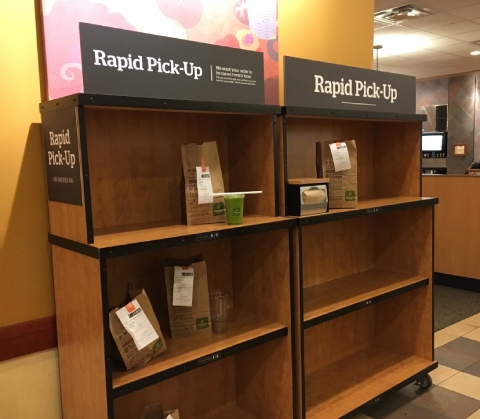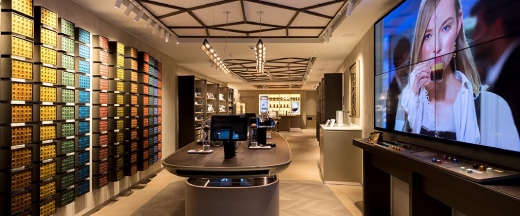Over the last couple of decades, the internet has made life easier in many ways. Online services offer shortcuts we now take for granted. Like next-day delivery at Amazon, so you don’t have to visit a bookstore. Convenient, quick… but also impersonal and detached from our community. In the physical world, we stopped crossing paths as often. Did we really mean for that to happen – to let human interaction slip on this scale in favor of consumer convenience? I think not.
I started to notice a trend over the years.
Our generation is increasingly enabling both introversion on one end of the spectrum and self-centeredness on the other end. Meaning: we are continuously expanding the space for ‘me and my time’. As a result, fewer of us seem to value an exchange with the wide range of people in our immediate surroundings.

I believe that this trend is in large part an unintentional side-effect of our thriving free market economy. Enjoying yet greater levels of convenience and a further reduction of check-out times has become our predominant expectation of the consumer experience. In the process, we have been normalizing the elimination of ‘having to face each other’ – also affecting how people behave in other areas of society.
Secret hero
If you pay attention, you see examples of a growing disconnect all the time.
Recently, on an 8-hour transatlantic flight, one of my fellow passengers seemed to have misplaced one of her earbuds. She tried searching the floor, but the cramped space of an economy seat does not allow for much twisting and turning. After a few anxious attempts to retrieve the lost earbud, she shrugged in the direction of her boyfriend and gave up.
One row back, another solo passenger suddenly noticed the earbud by her feet. I witnessed her picking it up, hesitating for a moment, and then placing the earbud back on the floor, more visibly by the aisle.

Hours passed. When the plane had landed at its destination and everyone came out of their seats, the boyfriend finally spotted the misplaced earbud by the aisle. “Wow, so lucky!” the couple cheered, unaware of their secret hero. The solo passenger silently looked up for a second, gleaming. She must have been glad that her desire to help had led to the reunion of the pair of earbuds. And, that no interaction was required while doing so.
Zero interaction
In all corners of society, we seem to be limiting ‘unnecessary’ interaction with people more than we used to. My hypothesis is that the way in which we buy most of our products is fueling a me-centered world, supercharged by online technological advancements.
Take the retail industry for instance. Online ordering and curbside pickup is presented to consumers as a convenient service that saves you time. And it does! Drive up, pop your trunk, wait a minute, and you are good to go.
When I am in the US, I regularly crave Panera Bread. At this chain of restaurants, I can pre-order my meal online, select a time slot for pickup, park my car, quickly grab my bag from a shelf, and walk out. Zero interaction with human beings – unless I hold the door for someone.

Want to book a trip to the sun? You will most likely browse the internet first. Compare different destinations, read strangers’ reviews and hunt down a good discount. Your perfect break is only one click away. There is no need to meet a representative of the travel agency. All you get is a neatly formatted, automated email with your boarding pass and details of the hotel. Pack your bags!
Different business models
You could argue that the businesses behind these transactions cleverly follow the iron law of supply and demand. Most consumers prefer new time-saving services that come with newly adopted online technology. Saving people’s time has always been a money-maker.
But it is still possible to run a successful enterprise that does not prioritize speed and convenience. One that does not erase human interaction in the process. In fact, some business models are deliberately built around meeting in person and a sense of community.
Nespresso
I believe Nespresso is a great example of a brand with such a business model. If there is one thing you should know about buying a Nespresso coffee machine, it is that original Nespresso coffee capsules cannot be bought at your local grocery store. To replenish your coffee, you either have to settle for Nespresso-compatible capsules from third-party brands or visit a Nespresso store – either online or one of their brick-and-mortar ‘boutiques’.

Why does Nespresso make it a deliberate chore for you to buy coffee? Why can’t you just add it to your Walmart curbside pickup?
Well, simply put, Nespresso believes that quality of time spent should outweigh quantity of time saved. In other words: personal experience comes before practical convenience. Of course, the coffee company wants to sell you coffee, but also to engage and build a genuine relationship with you.
Every visit to a designated Nespresso store is an opportunity to interact and to get more familiar with one another. “Good to see you again! Are you still happy with your coffee machine? Would you like to try this new flavor?” Person-to-person. Slower. More deliberate. Customers present at the store may even share preferences amongst themselves.
Satisfying surprise
An experience-oriented customer approach does not only work well with luxury items, like pricey coffee capsules. Most businesses should be able to find a way to more closely interact with their customers. You would be wrong to presume that your customers do not appreciate such an effort. In my opinion, not creating a place to meet and interact is merely a choice.
I am convinced that most consumers primarily prefer convenience, because it is difficult to imagine how valuable it could be to slow down for a second and to experience an unexpected person-to-person moment. It is up to you, as a business owner, to introduce a satisfying surprise and to go beyond what people expect.
Places to meet
For good measures, here are a few other ideas.
Add a coffee corner to your bookstore. Organize an annual long distance run as a health insurance company. Or host a monthly seminar with a prestigious speaker about popular trends in your line of business.
Albert Heijn, the leading supermarket chain in the Netherlands, combines all of these ideas into one. To bring customers and stakeholders together, the dutch grocer introduces the Better Food Festival. At this event, held for the first time on April 29 and 30 in 2022, you can taste all kinds of food, visit health workshops, and meet famous chefs and other celebrities, like Olympic speed skating champion Irene Schouten.

Benefit
With initiatives like these, you take the relationship with your customers to the next level. Consequently, your brand will become more top of mind. And you may even discover additional sources of revenue.
Does your business offer convenience that comes with the unintentional long-term side-effect of a detached customer experience? If so, how would you be able to counter that? I hope that this article holds the answer.
